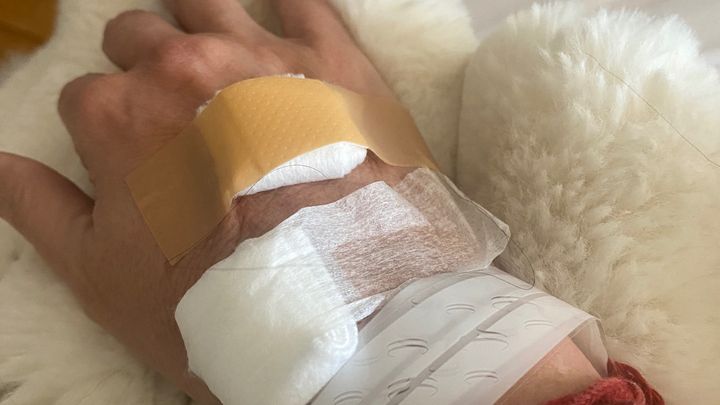
Help Jennifer Recover from Two Heart Surgeries
Donation protected
As some of you may already know, the last six months have been incredibly challenging for Jennifer. Last fall, as she was preparing to get a fairly routine heart procedure done to fix the atrial fibrillation that she’s been dealing with on and off for years, a heart monitor found that she had some non-sustained runs of ventricular tachycardia — a potentially fatal heart rhythm.
After getting some top-of-the-line scans done as part of a study at Mount Sinai, her doctors found that she has a small amount of scar tissue near her mitral valve. The combination of that build up and mild mitral-valve prolapse (plus general inflammation) is likely what’s caused the v-tach. There’s no surgical treatment for the scar, and her valve is in good shape overall, so the best option was to give her a safety net in case the worst should happen and she had a sustained and potentially fatal run of v-tach: a surgically implanted defibrillator that could constantly monitor her heart rhythm and deliver a life-saving shock. The odds of someone like her having a fatal rhythm are 1-in-50 annually, which felt like far too high of a risk to run, especially when v-tach can happen without warning, and there’s not really anything that can be done to reverse it aside from shocking the heart back into a safe, normal rhythm.
Fast forward to late January, Jennifer had her device, called an ICD — implanted cardioverter defibrillator — put in at Maine Medical Center in Portland. The procedure went smoothly, and while it was expected to be a fairly painful, it was supposed to be a two-to-three-week recovery. But almost immediately after the surgery, Jennifer experienced excruciating amounts of pain — pain she said was worse than giving birth — was severely fatigued, and nothing seemed to be improving.
Frustratingly, her pain was brushed aside as being normal, because she had the device implanted below the muscle instead of directly under the skin. After a number of visits to the emergency room and a diagnosis of pericarditis — swelling of the sack around the heart — Jennifer finally convinced the doctors to give her a full echocardiogram and the true culprit was found: a cardiac effusion.
Fluid was building up inside the sack, which is far more dangerous than swelling of the sack itself. With nowhere to go, the fluid can crush the heart, diminishing its ability to function; it can be fatal. As the doctor explained on the phone as he told Jennifer that she needed to return to Maine Med immediately, one of the leads had likely perforated the tissue at the apex of the heart, a rare complication with these surgeries, causing all the pain and the fluid buildup. We drove back to Portland, she was checked into the cardiac ICU, and the next morning she went back in for a second surgery to fix the lead.
What the surgeons found is that the sack had filled with blood, likely from the lead perforation. A heart surgeon had to cut a window (as it’s rather poetically called) into the pericardial sack to drain the blood and other fluid, and then the lead was moved to a different spot on the heart. The general consensus was that, had things gone on for much longer, Jennifer could have died.
Jennifer stayed in the hospital for the better part of the week after the second surgery, including a few more days in the cardiac ICU. When she was finally discharged things looked good, and while the recovery was expected to be longer as a result of the revision surgery, it seemed like the end was in sight.
Unfortunately that has not been the case: excruciating pain has continued. Just last week, she had to spend yet another night in the hospital after a CT scan showed that she developed pneumonia at some point during all of this, and has an effusion on one of her lungs too. IV antibiotics are helping there, and once again things are finally starting to feel like they’re on their way back to stable — and, eventually, to full recovery.
This whole ordeal has not only been incredibly scary and painful, but expensive. The surgeries, ER visits and hospital stays quickly caused Jennifer to hit the out-of-pocket maximum on her insurance for the year (around $7,000). She’s also been unable to work. Currently, Jennifer is under contract to write a new book for Penguin-Random House, and while her editor has been incredibly supportive and understanding about pushing back deadlines, in publishing having more time to work means waiting longer to get paid.
It’s hard to ask for help, especially at a moment in time when there are GoFundMes all over social media for families in Gaza, for people in Altadena and the Palisades who lost their homes in the fires, and so so much more. And yet here we are: if you’re able to help Jennifer as she works to finally recover from this ordeal once and for all, it would mean the world.
Organizer and beneficiary
Willy Blackmore
Organizer
Camden, ME
Jennifer Banash
Beneficiary